Walk: the shrine of Apollo
Last time in our Burton history blog, we discussed sites of archaeological interest. All of which are within walking distance of the village.
This being so, we now take you on a journey back in time to explore what remains of our Roman past. Today, we boldly go to the Temple of Apollo.

on the floor of the improvised shrine
Directions
Take the Nettleton Road out of Burton. At the bottom of the hill is the Old School which dates to 1850. Now a residential property, the Nettleton and Burton Church of England school taught at most around 112 children, with absences for help with the harvest and potato picking. The school closed in 1998.
Then take the footpath to the right of Lower Leaze. Where the path joins the road, turn left towards Nettleton Green. Pass the triangle and continue along the road to a right turn into Wood Lane. Follow this road to the footpath on the left around the periphery of a field which skirts Home Woods. A couple of years ago (∼2019) , this field was planted with sunflowers to encourage pollinators (it worked) and, for one glorious summer it was as though a corner of Provence had landed in Wiltshire. In subsequent years, the field has self-seeded with the overall crop a poor relation of that first year. In winter, the farmer leaves the dead flowers standing on their stalks to loom over the field like Martian shower heads.
Public Service Broadcast
Do not go through the woods, as many of the ash trees are infected with chalara dieback: not only do you risk spreading the disease, but a dead bough may fall on your head, and we wouldn’t want that.
Transmission resumes
Following the outer rim of the woods, the path turns sharp right down a short, slip-slidy slope. When you land at the bottom, turn left through the gate which takes you on a deeply stepped path descending the valley. In spring, you will find wild garlic, aconites and bluebells. Half-way down you need to pass through another gate, before you eventually come out on a plane on which you can make out the course of the Broadmead Brook in the Roman era. Turn left and walk towards the Fosseway.
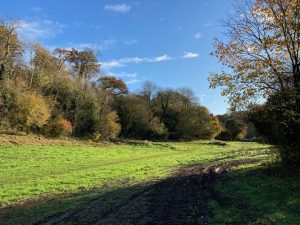
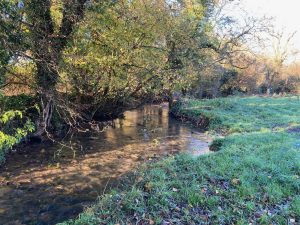
Nettleton Scrub: site of the Shrine of Apollo
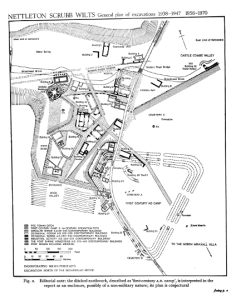

While you won’t see ancient ruins, the evidence is in the lie of the land, with a nettle-covered mound marking the remains of Building 1.

Leave the field by the five-bar gate. To return home, turn left.
Ten-minute detour: if you’ve not had enough of the Romans yet, instead of turning left, follow the Fosseway right, you can enter a field at the top of the hill where the Roman fort was located. This affords beautiful views over the entire site.
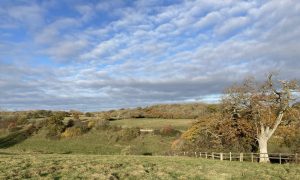
Rejoin the Fosseway, turning left down the hill. Once past the five-bar gate mentioned earlier, a bridleway/footpath is signposted on the right. Take this route through the valley until you arrive at the stone ford crossing the Broadmead. A great pitstop for dogs to tank up before the homeward journey.
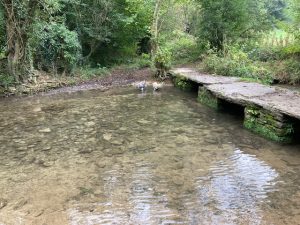
Bear left up a footpath, with a disused quarry on the right. At the end of the path, cross the road, and continue to Nettleton Green. Turn right at the triangle, then follow the road to Nettleton Road and Burton.
If you liked this…
read more about the Temple of Apollo
read more articles on our local history.

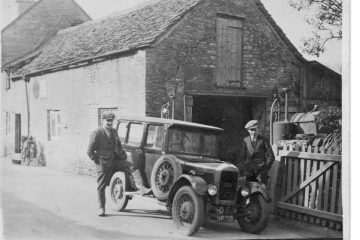
9 Comments
Lee Jane Hawkes · 11/21/2021 at 2:23 pm
That’s very interesting, I think we need to make a local rambling group, with tour guide!
Amanda Read · 11/21/2021 at 2:45 pm
It’s a beautiful walk throughout the year. Photos taken this morning, a very crisp November day. In Spring, the wild garlic, aconites and bluebells carpet the wooded step path down to the brook, then in Summer, you get the meadow flowers.
Stone Age Stomp – Burton in Wiltshire · 12/27/2021 at 2:56 pm
[…] Apollo mission […]
Stone Age Stomp - Burton in Wiltshire · 04/19/2022 at 10:03 am
[…] Apollo mission […]
Massacre in the Temple - Burton in Wiltshire · 04/29/2022 at 10:30 am
[…] you enjoyed this blog, why not walk the Apollo Mission to visit the […]
Shadows of the past - Burton in Wiltshire · 03/23/2023 at 12:10 pm
[…] archaeological evidence of human activity in the Nettleton area, such as Neolithic burial mounds, Roman shrines and Medieval causeways. These are features either visible on the ground or which were discovered […]
Landscape Archaeology: a timeline of human activity in Nettleton parish - Burton in Wiltshire · 03/24/2023 at 6:01 am
[…] For more on our Roman history, see Temple of Apollo. […]
Hydropower: a history of the By Brook - Burton in Wiltshire · 03/27/2023 at 6:58 am
[…] in the area to grind grain. Evidence of a Romano-British mill was found during excavations at the Shrine of Apollo, Nettleton Shrub. By the end of the 12th Century, the By Brook region was an important centre for […]
Burton – Wiltshire Walks · 01/31/2024 at 12:45 pm
[…] Being so close to the Roman Road that is the Fosse Way, it is not surprising that finds of settlement from that period have been discovered. These comprise about 30 buildings and include a temple (c. AD69) apparentlly dedicated to Apollo. An annotated walk around this area can be found at this link. […]